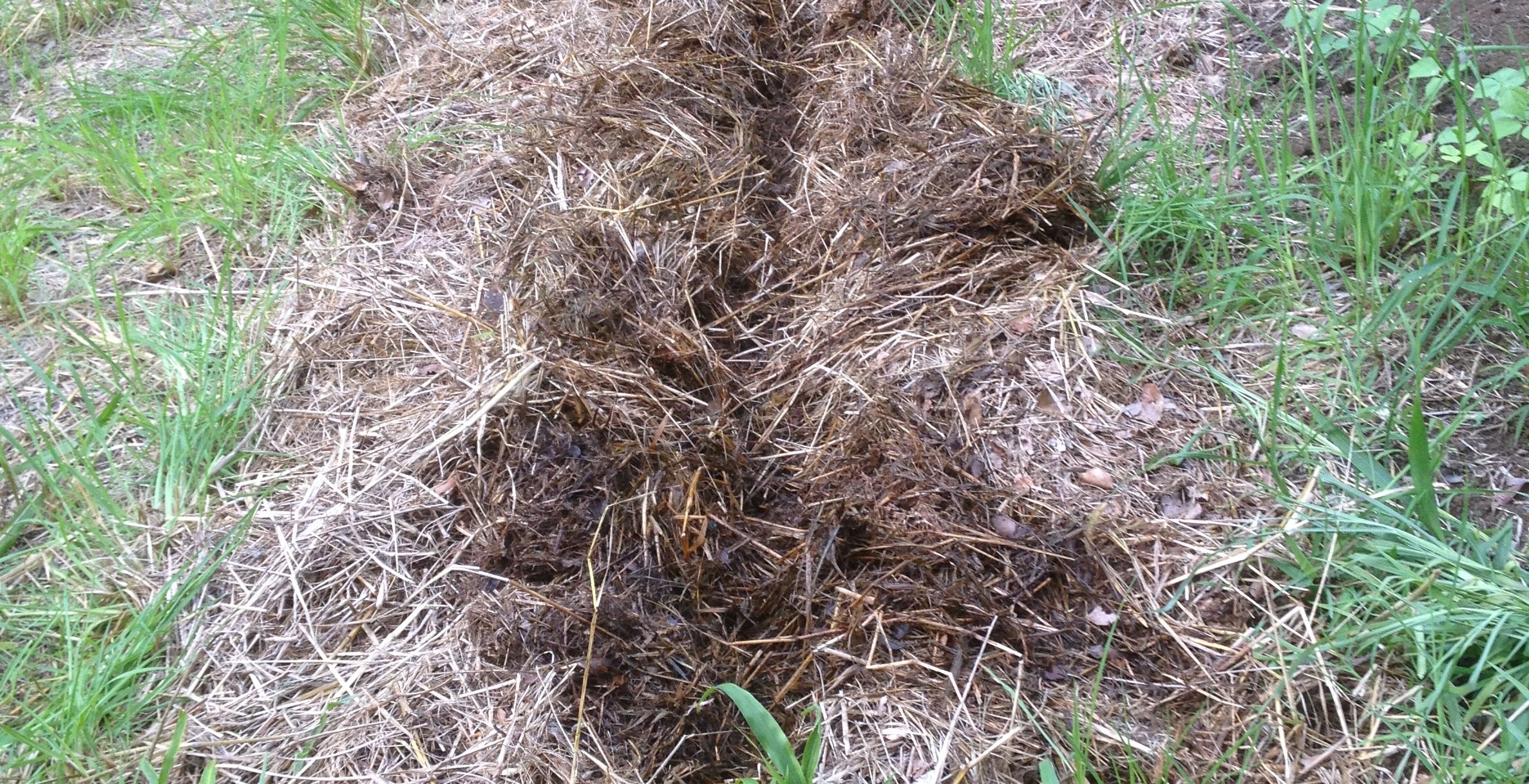I was keen to try no-dig beds, as they seem an ideal solution for opening up new garden areas without the considerable effort of hoeing and digging over new soil. My first efforts have not been entirely successful, although I’m still working at finding a method that works for me. Here are a few tips if you’re thinking of giving this method a try.
No-dig beds
Developed by Sydney gardener Esther Dean, no-dig gardening involves layering growing material like hay and manure on the surface of the ground and planting into that. Hay bale beds, which are a bit in vogue lately, could be considered an extreme example.
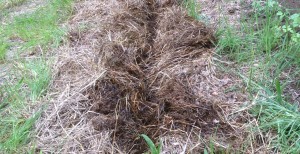
There are many different versions. You can completely separate the bed from the substrate, i.e. putting down paper or cardboard, which is good for bad soil or reclaiming lawn, or you can sow or plant onto the soil surface and mound the growth medium either side. I chose the latter method, as my aim was to bring the soil into production, and my primary material was hay cut from our paddocks.
My method in the ‘Low levels’ garden was to mow the existing pasture grass low, then pile rows of hay up, at least 30 cm high to form the beds. After waiting a few weeks for the grass underneath to die and for the hay to settle, I parted the hay down the middle of the rows and sowed a few trial crops; watermelon, sunflowers, wheat, broad beans, and mustard.
Tree roots – the real problem in my garden
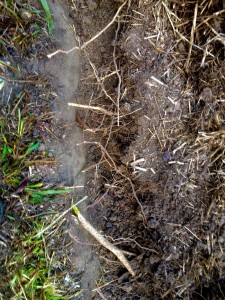
That was late Summer and into Autumn, and none of them did any good, which I put down mainly to shading by the trees along the northern edge of the paddock. But they looked pretty anaemic and stunted, not just wispy for lack of sun. So with the move into Spring now, and having got reticulation in to the Low levels, I thought I’d give it another go, which is when I realised what was probably the biggest problem with the beds. When I dug an edge ditch to formally outline the garden area I ran into a huge number of tree roots. Although the nearest trees are seven metres away, their roots extended throughout the old pasture and they were effectively draining the garden area of as much moisture and nutrients as they could find. The solution was to thoroughly dig a perimeter ditch and hope that this severed all the surface feeder roots.
Success with potatoes
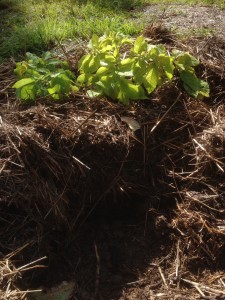
By contrast, I tried a ‘murphy bed’ of potatoes in a different spot. This was also a basic affair of hay piled on the ground, but I put a seed potato in each of six holes in the hay, then continued to pile on hay as the potatoes grew up. This gave us a nice haul of new potatoes by the end of Winter, as well as a rotted mound of hay which I can use to mulch vegetable beds.
In this case the potatoes grow happily over the soil surface, and send down some roots as well. The special property of potatoes for this method is that they easily grow up through hay as you pile it on (think of how long potato shoots can grow in the pantry). The new potatoes sit on the old soil surface, and if the plants were very robust, grow into the hay as the stem grows up.
No-dig beds – the lessons
I still think no-dig beds are the way to go, especially as I have read lately of people who have success with just plenty of leaf mulch. The great strength of the method is that the organic matter piled on the ground stops weed growth, while soil organisms break up the soil surface and slowly convert the bed to a more workable structure. In this climate too, a layer of hay only a couple of centimetres thick stays moist at the bottom even after weeks without rain, so it’s certainly good for maintaining a root zone.
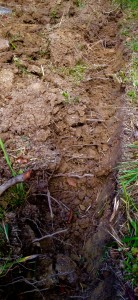
But I think no amount of surface bed preparation will counter tree roots in the long run. On a recent gardening show, the presenter demonstrated to a guest gardener how a nearby tree had sent roots up into her plastic compost bin and was keeping it dry and unproductive. I’m hoping the solution will be to keep those roots pruned with annual ditch maintenance.
Finally, just hay, albeit from nice juicy pasture grass, is not enough to provide nutrients for the bed. You need fertiliser, preferably manure of any kind, and as always here, lime to keep the pH up.

